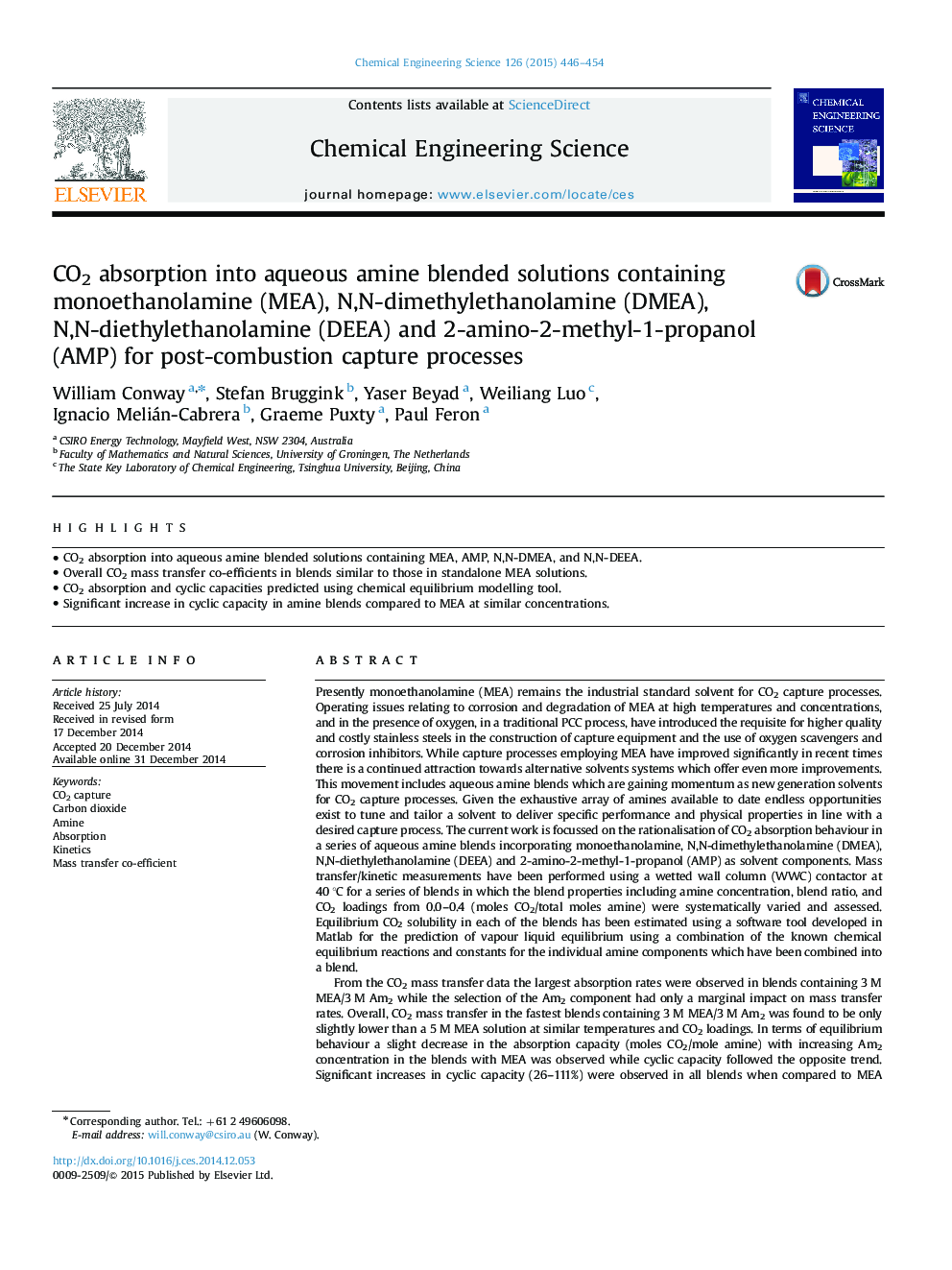| Article ID | Journal | Published Year | Pages | File Type |
|---|---|---|---|---|
| 6590306 | Chemical Engineering Science | 2015 | 9 Pages |
Abstract
From the CO2 mass transfer data the largest absorption rates were observed in blends containing 3Â M MEA/3Â M Am2 while the selection of the Am2 component had only a marginal impact on mass transfer rates. Overall, CO2 mass transfer in the fastest blends containing 3Â M MEA/3Â M Am2 was found to be only slightly lower than a 5Â M MEA solution at similar temperatures and CO2 loadings. In terms of equilibrium behaviour a slight decrease in the absorption capacity (moles CO2/mole amine) with increasing Am2 concentration in the blends with MEA was observed while cyclic capacity followed the opposite trend. Significant increases in cyclic capacity (26-111%) were observed in all blends when compared to MEA solutions at similar temperatures and total amine concentrations. In view of the reasonable compromise between CO2 absorption rate and capacity a blend containing 3Â M MEA and 3Â M AMP as blend components would represent a reasonable alternative in replacement of 5Â M MEA as a standalone solvent.
Related Topics
Physical Sciences and Engineering
Chemical Engineering
Chemical Engineering (General)
Authors
William Conway, Stefan Bruggink, Yaser Beyad, Weiliang Luo, Ignacio Melián-Cabrera, Graeme Puxty, Paul Feron,
